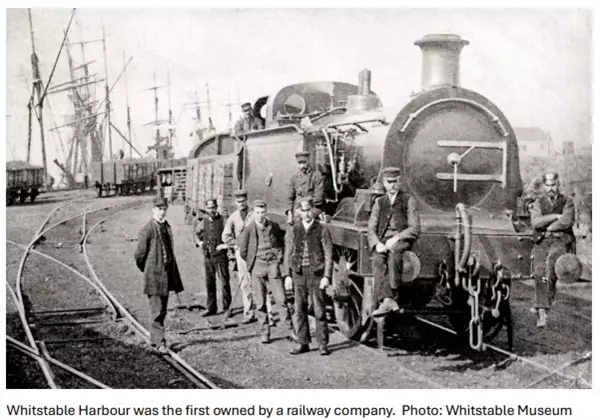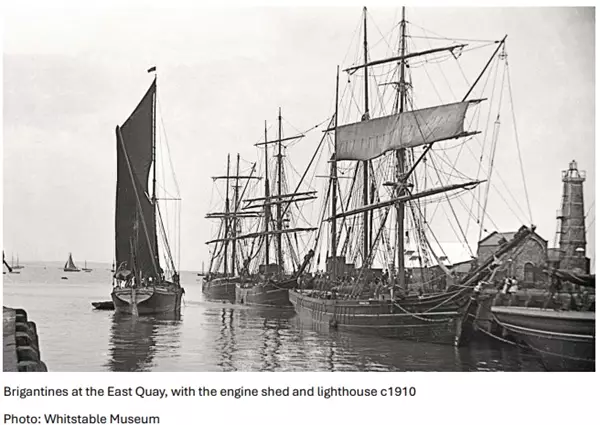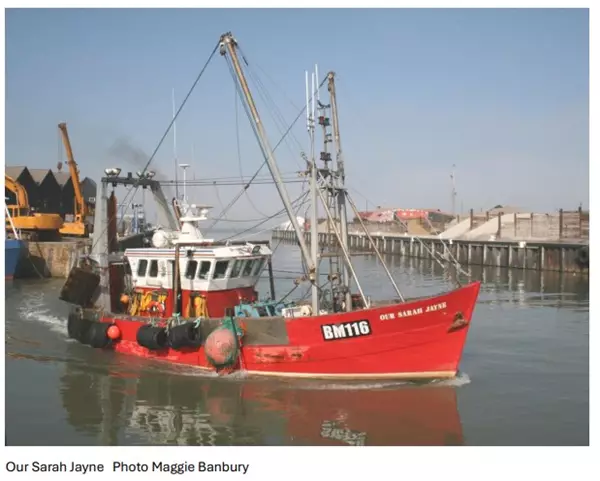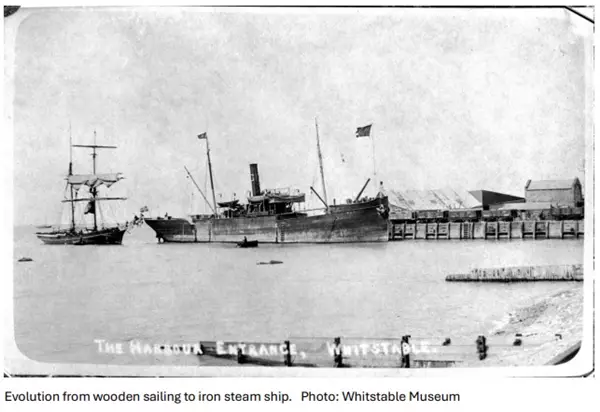The history of Whitstable Harbour dates back to the Roman era, when the town was known as "Cantium".
Home l Shop and eat l Things to do l Our history l Plan your visit
Education and volunteering l South Quay Shed l Harbour operations
During the Middle Ages, Whitstable became an important centre for oyster cultivation and trade, and the harbour played a crucial role in transporting oysters to London and other major cities in England.
In 1830, the Canterbury and Whitstable Railway was at the cutting edge of technology. Known affectionately as the ‘Crab and Winkle Line’ from the seafood for which Whitstable was famous, it was the second public railway line ever to be built.
Whitstable harbour was built in 1832 to serve the Canterbury and Whitstable Railway. Whitstable was a landing place for centuries, but the building of the harbour developed the importance of Whitstable as a local port.
The harbour became the first English harbour with a railway connection to facilitate the transportation of coal and other goods such as pineapples, explosives, wood, ice, coal, mercury, grain, tar and stone from the north east to the south, mainly initially to Canterbury
The busy harbour brought prosperity to the town, and the building of homes and businesses spread from the harbour.


In 1937, Bretts opened its first tarmacadam plant on the harbour. The third replacement plant is still working today, though the harbour suffered from a lack of investment during the war and problems deepened when the Canterbury and Whitstable Railway closed in 1952. Initiatives to generate trade, steady use by the aggregates industry and major investments in rebuilding the East Quay and in building the West Quay have enabled the harbour to survive, evolve and recently flourish. But in 1958, Whitstable Urban District Council bought the harbour and repaired it, and its use once again grew.
The famous forts, which stand out in the sea, were constructed during the Second World War to protect the area from aerial and naval attacks. The Red Sands Forts shot down 22 aircrafts and 30 flying bombs. From the mid-60s, the forts were used for pirate radio stations, and a large broadcasting mast remains to this day.
The smaller harbour is still a busy working harbour with fishing boats going out daily and the area is still famous for its oyster beds, which have been famous for hundreds of years since cultivation began in Roman times, as well as cockles and whelks. Fish sales on quayside and several restaurants are located on the South Quay where a wide range of fresh sea food is available. Shellfish is exported to many parts of Europe and Asia.
Work continues under the current owners Canterbury City Council and directed by the Whitstable Harbour Board to ensure its use continues and grows with the new South Quay Shed and support of the area.
With the thriving harbour art & food market celebrating local talents, it really is a great place to spend a few hours and, in the summer months, you can explore the coast by boat and visit the forts and beauty spots along the coast.


Visitor Information Centre The Beaney House of Art and Knowledge 18 High Street Canterbury, CT1 2RA 01227 862 162 canterburyinformation@canterbury.gov.uk



